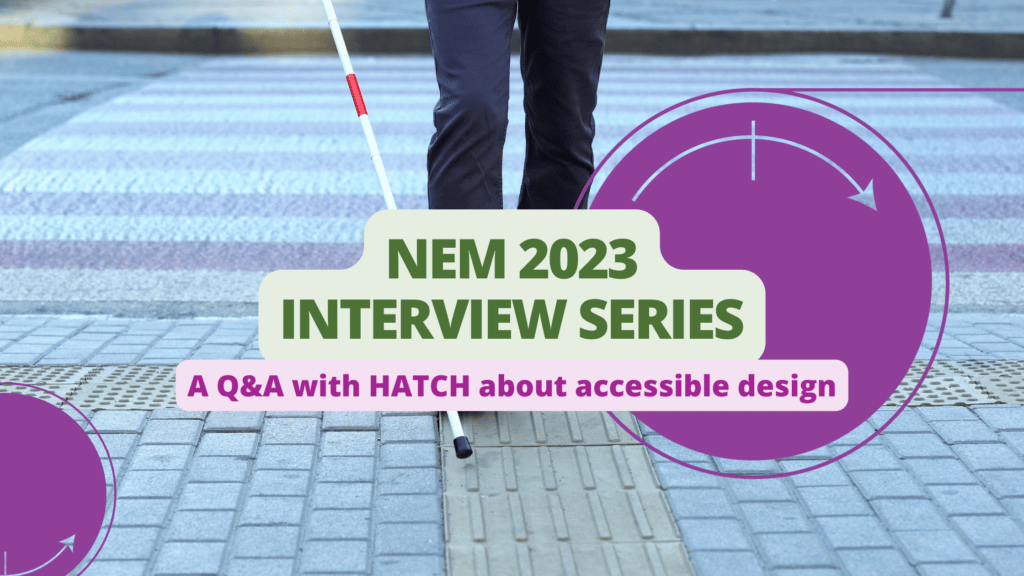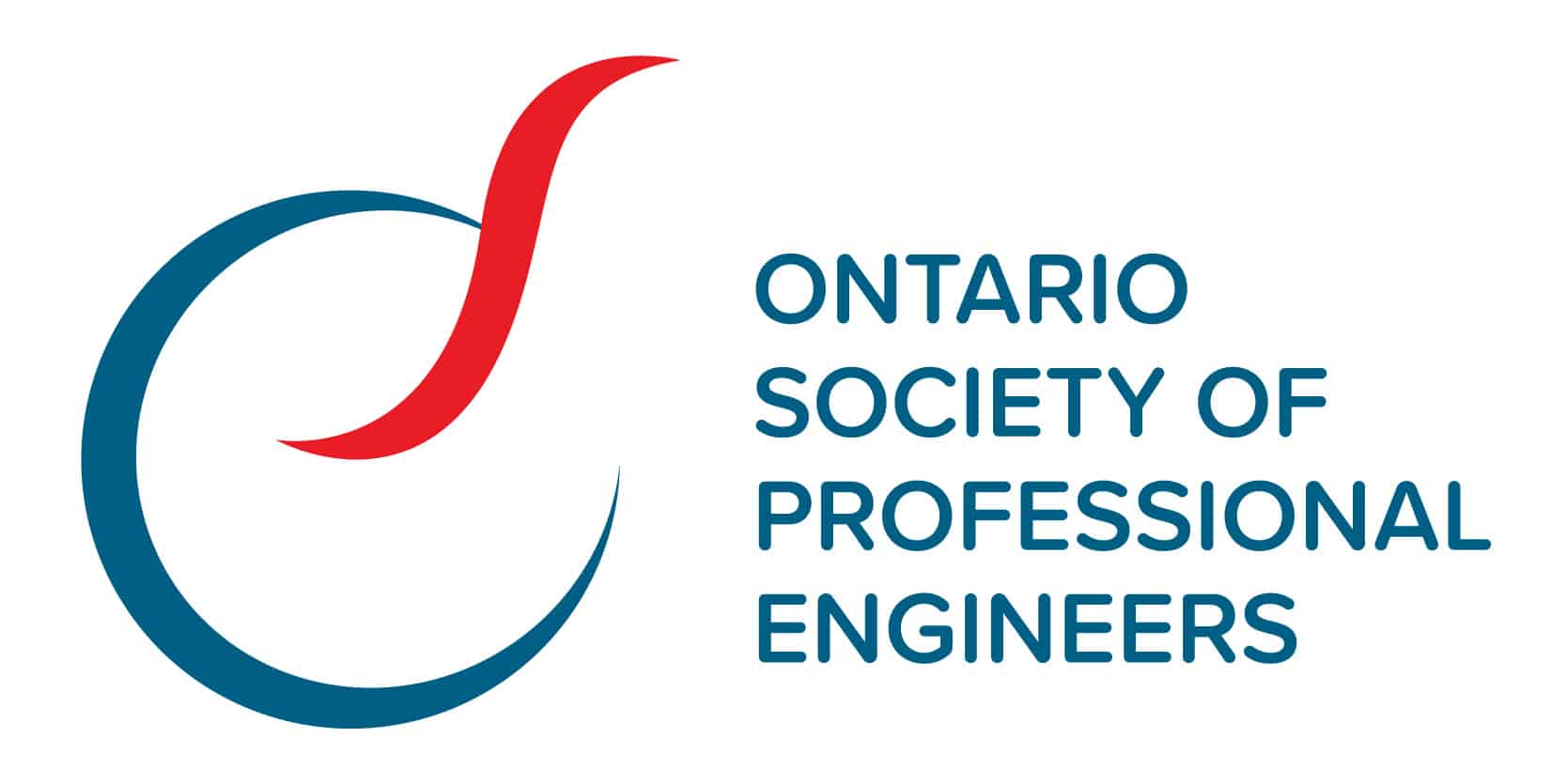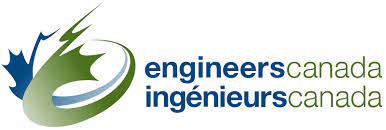
As we commemorate National Engineering Month, we’re reaching out to members of the Ontario engineering community to discuss what’s ahead for the industry.
What follows is a discussion with Andrea Cherry, Mechanical Engineer in Training at Hatch. Andrea is a big advocate of incorporating diverse and inclusive design (D&I) into her projects and believes that by being more inclusive we can create a better environment for everyone. Keep reading to learn more about Andrea’s work in this area.
Tell me a bit about yourself & your background.
I’ve been with Hatch for just under three years. I graduated from Queen’s University with a Mechanical Engineering degree, and I started with Hatch in July 2020. Initially, I was in our Tunnels group, and then I switched to our Thermal Power group, and I’ve been working as a Thermal Power EIT in our Mississauga office ever since.
I work on a wide variety of projects, including the redesign of the Royal Ontario Museum’s entire steam system. It’s great to be able to see the site and all of the artifacts. Another project I’m working on is coal-to-nuclear conversion, where we’re looking at integrating a small modular reactor into a coal-fired power plant.
In addition to my project work, I’m on our Diversity and Inclusion committee in the Western Canada region, where I’ve been a member for almost three years. My main focus is working in our Gender Equity cluster. We host International Women’s Day events every year, and we’ve started a women’s roundtable event, open to all Western Canada employees, where we discuss topics that impact women, such as maternity leave, imposter syndrome and being a woman on site. It’s a safe space where everyone can share their experiences and provide insight.
I’m also a part of our D&I design group, where we discuss different ways to make our projects and solutions more inclusive for everyone, including our clients, stakeholders, and the workers or users of the final product. We ensure that it’s inclusive to a wide variety of users.
Why is National Engineering Month (NEM) important to Hatch and the engineering profession overall?
I love NEM’s goal of being “a place for all” and think this inclusivity is crucial to both me and Hatch. It is essential to include engineers from different backgrounds and experience levels to inspire a wide variety of up-and-coming engineers, practicing engineers, and the older generation, reigniting their passion and inspiration. Engineering students in school are generating innovative ideas, which are relatable to professional engineers who have been in the industry for 20 or 30 years. Similarly, professional engineers can inspire new graduates by showing them interesting projects and what it means to be an engineer. Therefore, it goes in both directions, and Hatch is an excellent example of this. We have co-op students and employees who have been with Hatch for 50 years. NEM is a great platform for learning from other companies’ experiences and innovative projects.
The theme for NEM 2023 is lifelong learning. What does the concept of lifelong learning mean to you? Why is lifelong learning important in the work that you do?
I think the most important thing is innovation in learning and welcoming the lessons learned from every project. I strongly believe that any mistake is an opportunity to learn. It’s crucial to maintain this mindset and embrace lifelong learning without considering mistakes as something negative or a bad thing. Instead, it’s an opportunity to learn from past mistakes and grow. It’s also important to be open to new ideas, which come from having conversations with people and reflecting on past projects to understand what went wrong and what we can do differently next time. This approach is relevant not only from a technical perspective but also from a personal one. We need to identify the best way to engage with clients and team members, ensuring everyone’s voice is heard. Experience and being open to vulnerability and mistakes are essential to succeed, and it’s all about mindset.
Can you tell me a little more about Hatch and the types of projects you work on?
I talked briefly about what I do, but it was just a high-level overview of my work at Hatch. We have three main sectors: metals, energy, and infrastructure. When I started at Hatch, I was in our infrastructure group working on tunnels. Later, I moved to our energy group. These are the main pillars we work on, and we have projects in all three groups. We also have support groups, such as our project delivery group, which helps out with every part of our projects, and our environmental and sustainability groups, climate change group, shared services group, procurement, and commissioning. Essentially, we have every job you can imagine at Hatch, and offices all over the world. We have over 9,000 employees across numerous offices, and we work in over 150 countries.
Regarding our projects, we do a lot of work with Metrolinx and the TTC locally, updating subway and GO Train stations. One project I worked on a lot when I was in the tunnels group focused on accessibility in subway stations. Many stations lacked wheelchair access, so there was a need to add it. And whenever I take the TTC, I notice the locations that have wheelchair accessibility. I don’t use a wheelchair, but I can empathize with those who do. It’s challenging to navigate your entire journey around that, but it was one of the cool projects I got to work on. Earlier, I spoke about the energy side of things, but I love working at Hatch because of the diverse group of projects that have a positive impact on so many people.
What is diverse and inclusive design, and why is it important in today’s world?
The way that Hatch has defined diverse and inclusive design is two-fold. First, we ensure that the teams working on engineering projects come from a wide variety of backgrounds, cultures, and levels of experience. Second, we prioritize designing end products that are inclusive to a wide variety of users and stakeholders.
In any project, it’s crucial to figure out what to prioritize – safety, budget, timeline, and inclusive design. Inclusive design often comes as an afterthought because the design teams may not come from diverse groups. That’s why it’s essential to have at least a couple of people on the project team who represent the community where the project is located. They can provide their experiences and insights into what’s important to the community.
Inclusive design should be part of the design process from the start because it’s essential to prioritize the needs of all users, not just the majority.
I believe that the work we’re doing at Hatch and our changing mindset will inspire others to view inclusive design differently. For example, right now many baby changing tables are only in women’s washrooms, not men’s. If there are only change rooms in women’s washrooms, how can we expect to change the conversation and culture around parental stereotypes and responsibilities if the design itself does not change? It’s not just important for the projects we’re working on, but for the conversations around minority groups worldwide. It’s crucial to consider how the things they interact with daily can become more accessible to them. This is another important aspect of inclusive design.
What are some best practices for creating diverse and inclusive design teams?
For design teams, the first step is to look at the project that you’re going to be working on. I touched a bit on that in the previous question. You need to figure out geographically where you’re going to be working, who the key people are, and whether they are going to be the end-users or workers. Whether it’s a power plant, community center, or something in between, who are going to be the people working there or using the site? What socioeconomic background do they come from? Do they have any disabilities? What culture are they from? What languages do they speak? By asking all of these questions, you can figure out a lot in-house. However, it’s also crucial to engage with the client as they will know or should know who those users are going to be. They can provide more insight into who the majority of the people going to be that are using this product, and who are the minorities as well, to ensure that you can include everyone across the board.
Then it comes down to a difficult decision because when you try to plan for diverse and inclusive designs, some things may contradict each other. For instance, if you have someone hard of hearing and someone who’s blind, something that may benefit one side may hinder the other. Therefore, it’s crucial to figure out what’s the most accommodating design choice for us to have in this product or site, whatever the final product is, and work closely with those people it impacts.
When it comes to the actual design team, it’s essential to align the users’ needs and make sure that they are represented in the design teams. So it’s not just typically all men coming from one location in a male-dominated industry. You need to ensure that you have those minorities or whoever is represented on site in the design teams so they can provide their perspectives and experiences. If you have a lot of women using equipment or engaging with the project, you need to figure out what they need, for example, maybe if they’re going to be nursing every once in a while, you need to make sure that you have locations for them to do that. Similarly, if the majority of individuals on-site come from a different culture, you need to make sure that you engage with them to get their perspectives.
Are there any specific programs, initiatives, or outcomes happening at Hatch that you’d like to tell me about?
I’m really excited about this new course that we’re going to have available to all Hatch employees very shortly, hopefully in the next month or two. We’re calling it “Developing a D&I Design Mindset”. There is an e-learning course and workshop that introduces the idea of diverse and inclusive design. We recommend some tools that our employees can use as well. For example, we have a D&I Design Prompts List that we’ve created, and it lays out 16 different sections that touch on the wide variety of different abilities, disabilities, and minority groups that you could interact with on a project. For example, it includes gender expression, gender identity, country of origin, culture, indigenous communities, and background. It touches on a wide variety of different groups and what to look out for as someone working on a project, whether you’re the project manager or working on a proposal for a project. We make sure that you understand what questions we need to be considering, and what questions we need to be asking our clients, and then turn it around to make the project more inclusive. For instance, regardless of how you identify, we make sure that you have a space where you feel included. We make sure that the signage is legible to you regardless of what language you speak.
What does the future of engineering look like and how does Hatch fit into that?
Broadly speaking, I see the future becoming more green and sustainable with the projects that we work on. I also see all of the ways that we can be more innovative, including being more inclusive of the people we have in the engineering industry. It has been a male-dominated industry for so long that we’ve only had a small group of different experiences and perspectives. This has limited the projects we work on and the solutions we create. Women, along with other minority groups, can bring so many new perspectives into the engineering world.
Being more inclusive in the designs encourages more people to speak up and bring new, innovative ideas. Introducing more minority groups into the engineering industry, in general, can lead to so many new and innovative solutions, encouraging more people to be interested in engineering and have a voice in the field. This will lead us in the direction we need to go in terms of sustainability, creating more green solutions, and building a better world for all of us.
At Hatch, this idea fits into our manifesto, which is our go-to whenever we’re looking for what’s important to Hatch. Building innovative and sustainable solutions through positive change is one of the things we focus on. We also prioritize building diverse teams, which helps us achieve our goal of positive change through innovation. The manifesto is on everyone’s wall at Hatch and is something that’s so important to all of us. It ensures we have our priorities right, engage with the right people, and build the right things for our clients while keeping in mind sustainability and the needs of end-users.
To learn more about diverse and inclusive design at Hatch, please visit their website. Week 4 of NEM Ontario 2023 events covers equity, diversity, and inclusion in engineering fields. Visit nemontario.ca/events to sign up for an upcoming event.
Learn. Grow. Thrive. Together.
With bold topics, industry expertise, and diverse perspectives – National Engineering Month is Ontario’s engineering event of the year. Together we can advance the engineering profession, spark an interest in the next generation of engineering professionals and celebrate the role that engineers play in our society. We hope you can support Ontario’s engineering community by attending a #NEM2023 event. For more information about National Engineering Month Ontario events, please visit nemontario.ca.


